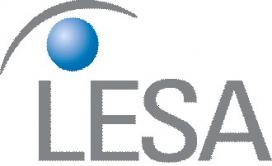Partnership Integrates Wi-Fi with Asymmetric VLC, Addressing Uplink Challenges
TheCenter for Lighting Enabled Systems & Applications (LESA), an NSF-funded Engineering Research Center (ERC), headquartered at Rensselaer Polytechnic Institute (RPI), demonstrated an integrated Wi-Fi and asymmetric VLC system. This addresses VLC uplink challenges such as glare, and mobile battery life-time, while supporting the dominant mode of downlink traffic.
LESA partnered with the New Jersey Institute of Technology on the project, using commercial off-the-shelf (COTS) luminaires on a downlink-only model for the modulated light, and a duplex uplink for the RF (Wi-Fi) in a multi-tier heterogeneous network to increase its reliability and uplink capacity.
The collaboration addresses demand for ultra-dense directional VLC cells to supplement traditional omnidirectional RF WLANs with additional downlink capacity in environments where users and data demand are densely distributed. Further research is underway to address the need to accommodate device mobility in multi-cell, multi-user access settings.
The project provides flexibility for the testbed environment by expanding on LESA’s past work on the software-defined VLC (SDVLC) testbed by incorporating four individually controllable VLC-enabled luminaires within the network.
The team demonstrated four luminaires transmitting individually controlled baseband signals from an X310 universal software radio peripheral (USRP), with receivers at various locations approximately 2m below the luminaires able to uniquely distinguish the signals. With this implemented ability, it is possible to demonstrate and evaluate a variety of multi-cell networking aspects such as resource allocation, handover decisions/implementation, and interference characterization in a real system.


